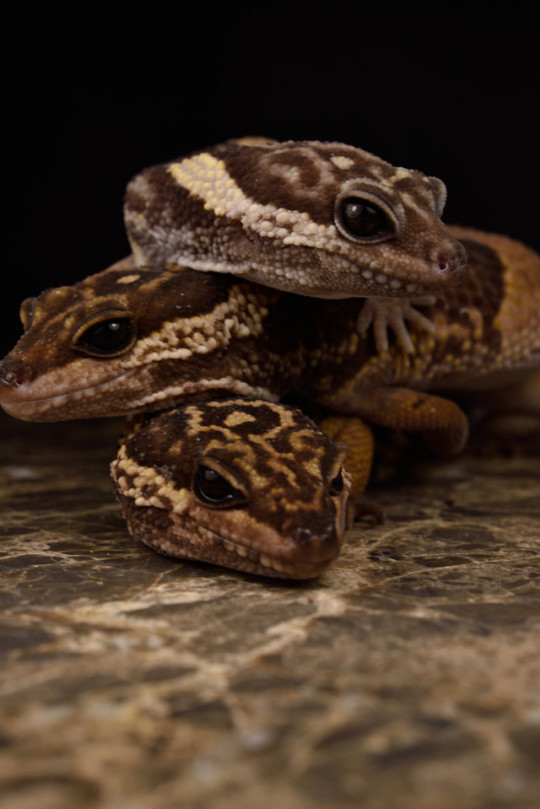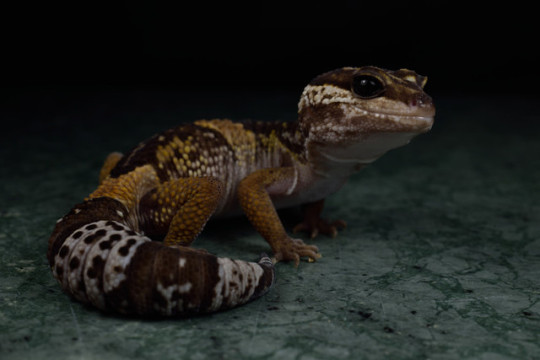Text
E. Hardwickii Care
East Indian leopard geckos are really care as pets, and are very new in the pet trade. Due to this, there are no cohesive care sheets available for them. What I know is based off of the little information I've found from Google, DMing owners, and taking bits from care of leopard geckos, African fat tailed geckos and cave geckos (goniurosaurus). This post is a compilation of what I've gathered, and it will be updated and remade as I learn more! If you feel like anything is wrong with this, pleeaase point it out to me! I want to provide the best care possible to my gecko.
Care Sheet Edition #1
E. Hardwickii prefer it cooler than leopard geckos, closer to goniurosaurus geckos. They should be kept at 80°F to 85°F during the day, and 75°F at night. Under belly heat is not necessary, but can be provided (I'm not an expert but I'd imagine this is as they live in forest, so the ground wouldn't be able to heat up greatly).
E. Hardwickii also prefer more humidity, closer to African fat tailed geckos. They should be kept in a vivarium between 40% and 60% humidity (based off of discussion with owners, and looking at the weather forecast for Tikarpada, an Indian village where they are native to).
They should be kept in a 20 gallon tank as an adult (they get to the same size as macularius). A (slightly) smaller or larger tank is acceptable. A minimum of three hides should be provided; a hide on the warm end of the temperature gradient, a hide on the cool end and a humid hide with maintained high humidity. As east Indian leopard geckos are very timid, more can be provided to make them feel more comfortable and less exposed.
E. Hardwickii are insectivorous, but owners have found that they do not eat worms. Gut loaded, appropriately sized crickets, locusts or small dubia roaches should be fed. For every four feedings, three should have food dusted in calcium, and one should have food dusted in a multivitamin powder. If vitamin D3 is not provided in the powder, a UVB light source should be provided (5-6%, based on leopard geckos).
While not arboreal, east Indian leopard geckos climb frequently in the wild. Decoration to enable climbing that should be provided. A planted bioactive vivarium with naturalistic decor will provide this very well (this is what I plan on providing).
E. Hardwickii can be kept on loose substrate can be kept on loose substrate such as bark chips or soil. It should be treated with more caution for younger geckos, as it is easier for them to get impacted as they are smaller. They should NEVER EVER be kept on sand; they WILL die of impaction. It is unnatural and unsafe.
E. Hardwickii may be cohabited under certain conditions-
Males should NEVER be cohabited - they are territorial and will fight, and one will die.
A male and female should be not really be kept together, as one may get bullied and die/become underweight, and they will both be stressed from constantly breeding.
Females may be kept together, bit with sufficient space (I'd say minimum 30 gallons) and hides (6 hides, 2 of each necessary hide so there is one for each gecko). Behaviour must be closely monitored for bullying as one may be bullied. Behaviour can change very quickly.
Hatchlings/juveniles being kept together should be treated with caution - cannibalism has been observed in young geckos.
Only geckos of similar size should be cohabited as it reduces chances of bullying.
Anyway, as I said, PLEASE TELL ME IF YOU THINK I'M WRONG AND EXPLAIN WHY! I want to be as educated as possible before getting my gecko.
#reptiblr#leopard gecko#gecko#care#eublepharidae#eublepharis#eublepharis hardwickii#hardwickii#east indian leopard gecko
5 notes
·
View notes
Text
E. Hardwickii Colouration
When east Indian leopard geckos first hatch out, they are black, white and pale yellow in colour. They have white markings on their tails and a ring going around their jaw and head, going down their neck. Their markings are high contrast bands of block colour. They have lighter brown legs. Their eyes are pitch black, like the eclipse eye morph in macularius.

(Image from ramseyreptiles on Instagram)
As they age, the black colouring turns to brown and the yellow turns to a mango colour. Their colours also begin to mottle and become slightly less contrasted. Additionally, their head patterns begin to form. The head pattern of an east Indian leopard gecko is unique to each gecko, like finger prints in humans! The photo below shows a two month old gecko -
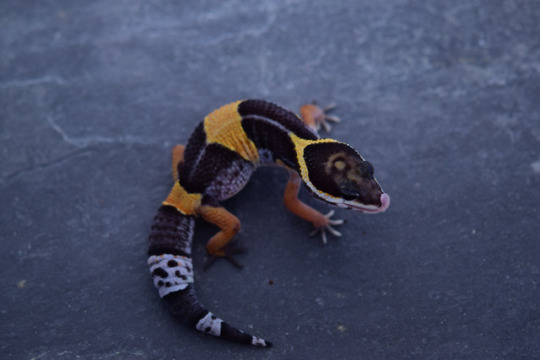
(photo from geckoboa.com)
By adulthood, their colours are much more mottled. The black bands have turned to brown with patches of lighter colours and white patterns. The yellow bands are orange (or caramel, depending on the gecko) with lighter tones along the spine and sides. The tail still has white bands, but with dark speckles. Their head patterns are fully developed, and their blue eyelids will show through! The white headband may have also developed other tones towards the back of the head. Their legs are caramel with brown speckles. The photo below shows an adult gecko, but it is quite a high contrast adult -
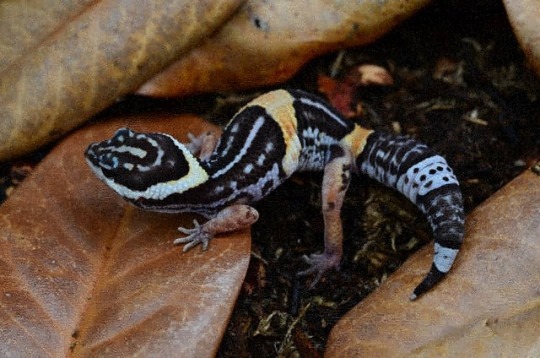
(photo from geckoboa.com)
Other geckos have a lot more speckles and less contrast -

(photo from bion_terrarium_center on Instagram)
There are no morphs or traits yet developed for the east Indian leopard gecko, but it is only a matter of time with the growing popularity of the species. I can imagine some beautiful melanistic or high-orange individuals being line bred, and an albino/leucistic gecko would look really interesting!
In the wild, there is a rare form of the gecko that has black and white markings and a slightly different body structure -
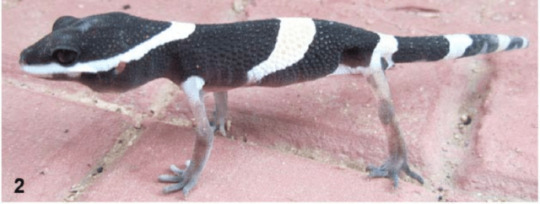
However, these aren't in captivity or the pet trade. As much as I am opposed to wild caught animals in captivity, it would be interesting to see the outcome of interbreeding these with the normal hardwickii phenotype.
#leopard gecko#eublepharidae#eublepharis#hardwickii#eublepharis hardwickii#east indian leopard gecko
1 note
·
View note
Text
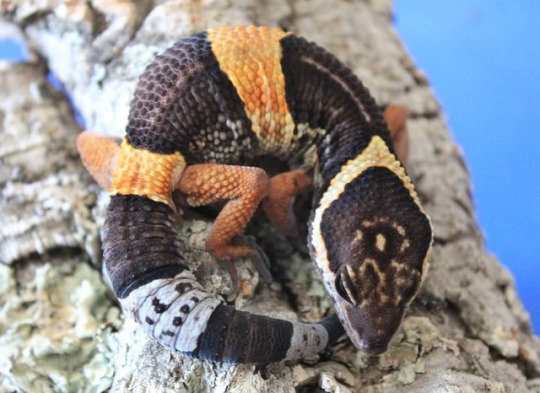
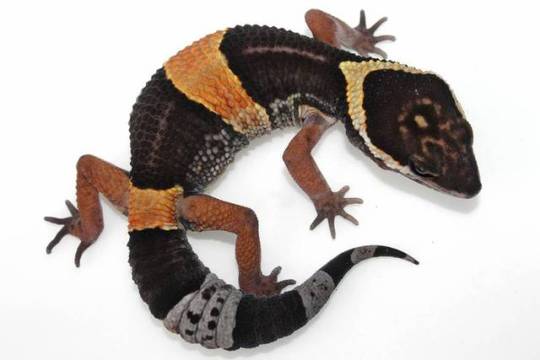
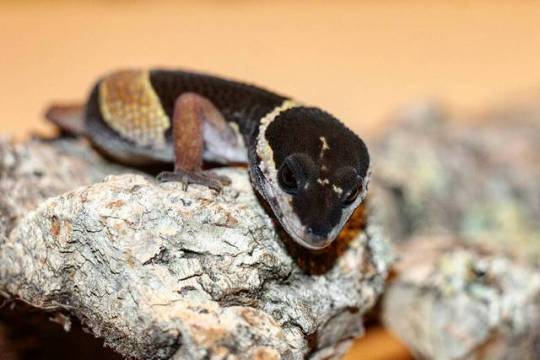

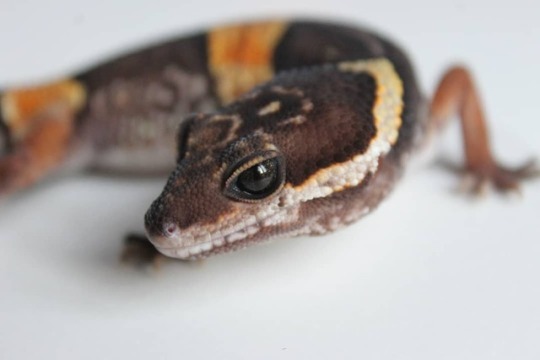

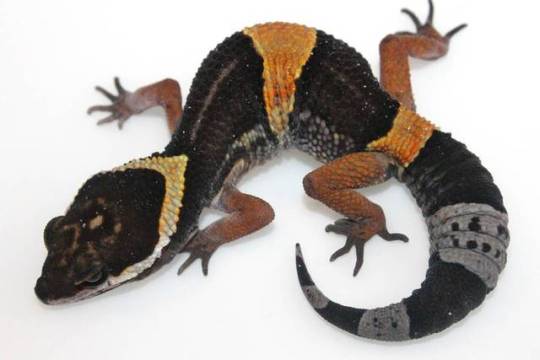
Some beautiful E. Hardwickii from the.tower.geckos on Instagram
#leopard gecko#east indian leopard gecko#eublepharis#eublepharidae#hardwickii#eublepharis hardwickii#reptiblr
0 notes
Photo
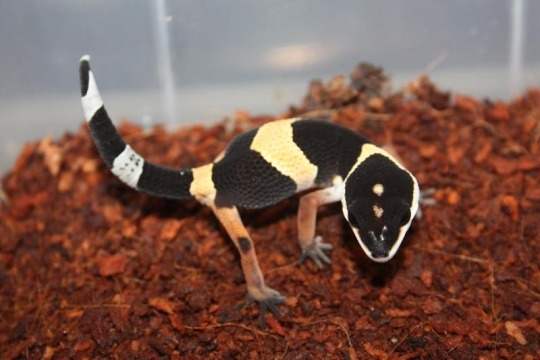
East Indian Leopard Gecko, super rare in pet industry.
13 notes
·
View notes
Text
Eublepharis Hardwickii
Eublepharis hardwickii, or the east Indian leopard gecko, is a close relative of the more well known and popular eublepharis macularius, or common leopard gecko, both coming from the same genus. However, hardwickii are much rarer and are newer to the pet trade then macularius so are much less well known.
Eublepharis hardwickii are a terrestrial, nocturnal gecko from east India and Bangladesh. They get to about the same size as common leopard geckos, but live a very different life! They are the only species of leopard gecko that lives in woodland, and live in a more tropical environment than their arid cousins. During the day, hardwickii hide under stone and logs, to come out and hunt at night.

(Photo credit to Geckoboa)
Hardwickii also look very different to macularius. They have a unique colouration of brown and yellow-orange stripes, with speckles of white. They look much closer to African fat tailed geckos than most leopard geckos!

(Photo credit to Geckoboa)
In Odisha, an Indian province which they are found in, hardwickki are called ‘kalakuta sapa’, roughly meaning ‘death bringing snake’. This stems from the local belief that they are venomous (which is not true). Rather than eating people, hardwickii are insectivorous. However, owners have found that they are often fussy with worms, or will refuse them altogether.
#leopard gecko#eublepharis#hardwickii#eublepharis hardwickii#eublepharidae#east indian leopard gecko
1 note
·
View note
Text
Hiya :)
I've made this blog to share my love for reptiles and animals, but also my journey towards getting an east Indian leopard gecko, eublepharis hardwickii. They are quite rare in captivity, so there is no cohesive care guide for them. I'll be sharing my progress in researching them, and eventually getting one. So, welcome!
1 note
·
View note
